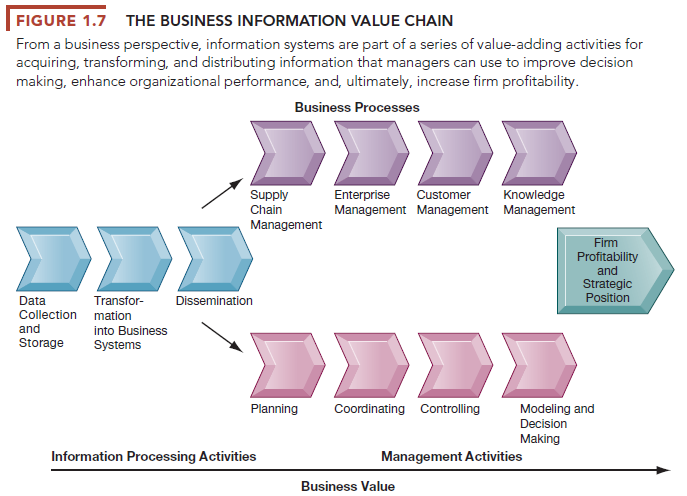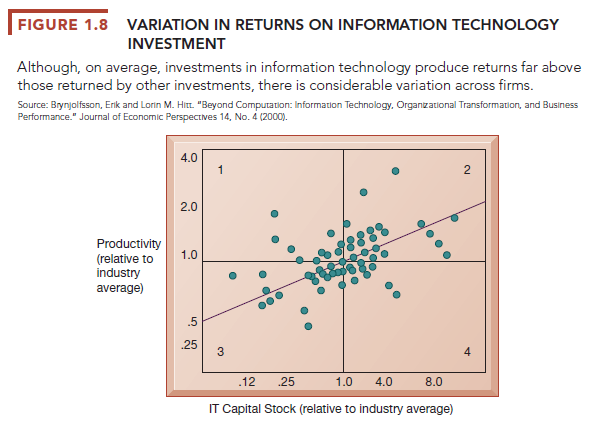Managers and business firms invest in information technology and systems because they provide real economic value to the business. The decision to build or maintain an information system assumes that the returns on this investment will be superior to other investments in buildings, machines, or other assets. These superior returns will be expressed as increases in productivity, as increases in revenues (which will increase the firm’s stock market value), or perhaps as superior long-term strategic positioning of the firm in certain markets (which will produce superior revenues in the future).
We can see that from a business perspective, an information system is an important instrument for creating value for the firm. Information systems enable the firm to increase its revenue or decrease its costs by providing information that helps managers make better decisions or that improves the execution of business processes. For example, the information system for analyzing supermarket checkout data illustrated in Figure 1.3 can increase firm profitability by helping managers make better decisions as to which products to stock and promote in retail supermarkets.
Every business has an information value chain, illustrated in Figure 1.7, in which raw information is systematically acquired and then transformed through various stages that add value to that information. The value of an information system to a business, as well as the decision to invest in any new information system, is, in large part, determined by the extent to which the system will lead to better management decisions, more efficient business processes, and higher firm profitability. Although there are other reasons why systems are built, their primary purpose is to contribute to corporate value.

The business perspective calls attention to the organizational and managerial nature of information systems. An information system represents an organizational and management solution, based on information technology, to a challenge or problem posed by the environment. Every chapter in this book begins with a short case study that illustrates this concept. A diagram at the beginning of each chapter illustrates the relationship between a business challenge and resulting management and organizational decisions to use IT as a solution to challenges generated by the business environment. You can use this diagram as a starting point for analyzing any information system or information system problem you encounter.
Review the diagram at the beginning of this chapter. The diagram shows how PCL’s systems solved the business problem of inefficiencies created by a far-flung, highly paper-intensive business. These systems provided a solution that takes advantage of opportunities provided by new wireless digital technology and the Internet. PCL digitally enabled its key business processes for planning, designing, and monitoring its construction projects. These systems have been essential in improving PCL’s overall business performance. The diagram also illustrates how management, technology, and organizational elements work together to create the systems.

Source: Laudon Kenneth C., Laudon Jane Price (2020), Management Information Systems: Managing the Digital Firm, Pearson; 16th edition.

Nice post. I learn something new and challenging on websites I
stumbleupon on a daily basis. It will always be useful to
read content from other writers and practice a little something from their websites.
I believe this website contains very superb written content articles.